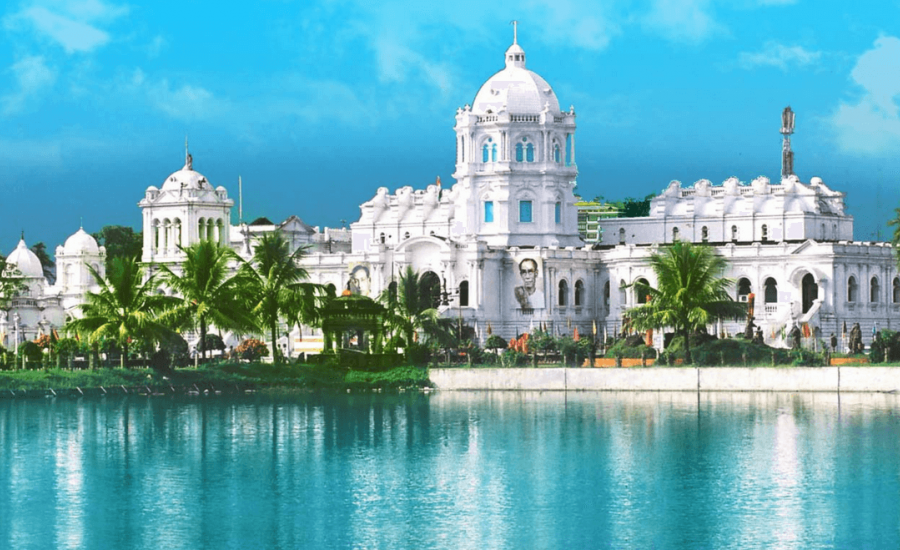
Tripura
Tripura is a hilly state in northeast India, bordered on 3 sides by Bangladesh, and home to a diverse mix of tribal cultures and religious groups. In the capital Agartala, the imposing Ujjayanta Palace is set among Mughal gardens, and Gedu Mia’s Mosque has white marble domes and towers. South of the city, Neermahal summer palace sits in the middle of Lake Rudrasagar and blends Hindu and Islamic architectural styles.
Destinations
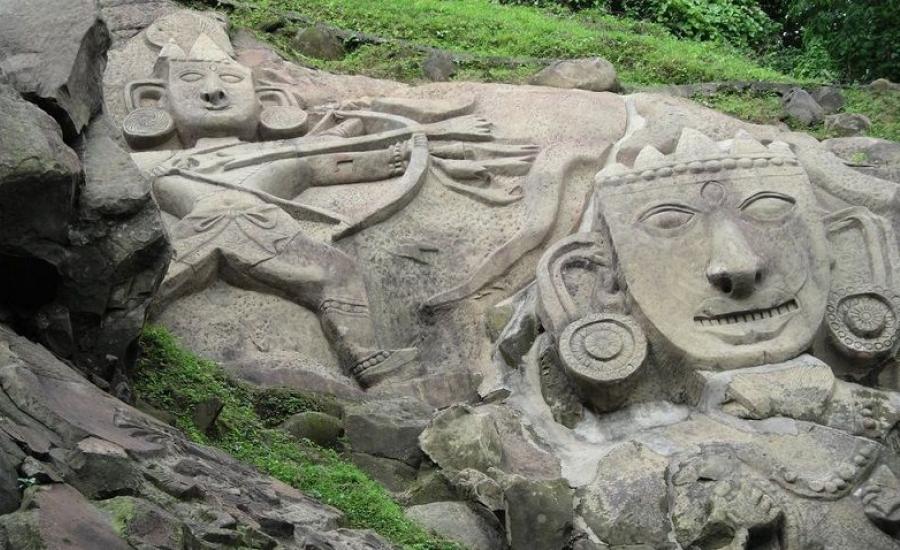
A prime tourist spot in Tripura, Unakoti is an ancient pilgrimage center.
Unakoti is where India's heritage stores its carvings and sculptures of gods and goddesses. Located in the lush green forest of North Tripura, Unakoti is the Historic Shiva Pilgrimage dated back to somewhere 7th to 10th century A.D. Many of the rock carvings here depict the life of Lord Shiva as well as other instances from the Hindu Mythology. Sculptures of the Nandi Bull, Lord Ram, Lord Ganesha, Lord Hanuman and Lord Ganpati can also be seen here. Unakoti also makes a good place for hiking, trekking and other activities given the terrain and the natural offerings of the area.
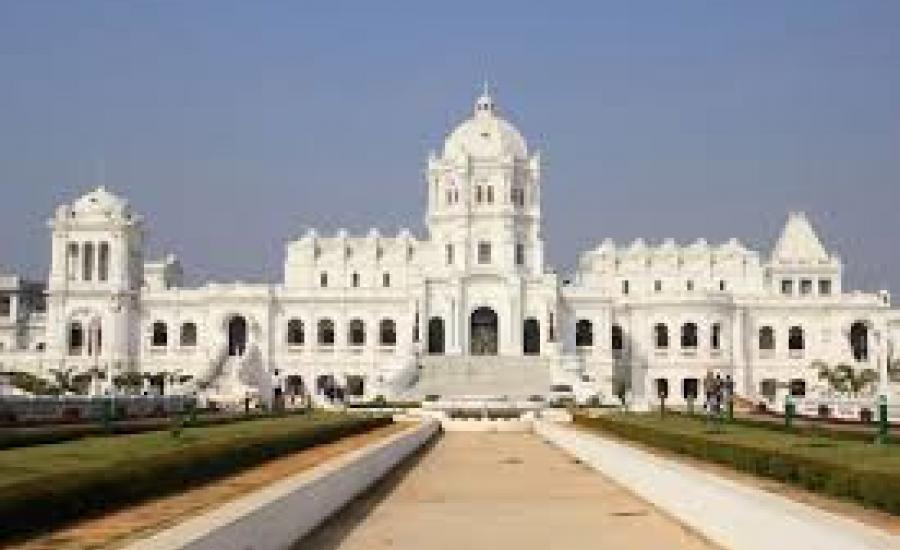
The Ujjayanta Palace is a museum and the former palace of the Kingdom of Tripura situated in Agartala, which is now the capital of the Indian state of Tripura.
The palace was constructed between 1899 and 1901 by the King of Tripura, Maharaja Radha Kishore Manikya Debbarma under Martin and Burn Co. (now, Martin Burn Limited) and stands on the banks of two lakes surrounded by gardens inspired by the Mughal style . It was the home of the ruling Manikya dynasty until Tripura's merger into India in October 1949.
Ujjayanta Palace showcases the arts, lifestyle, tradition & utility craft of communities residing in North-East India.
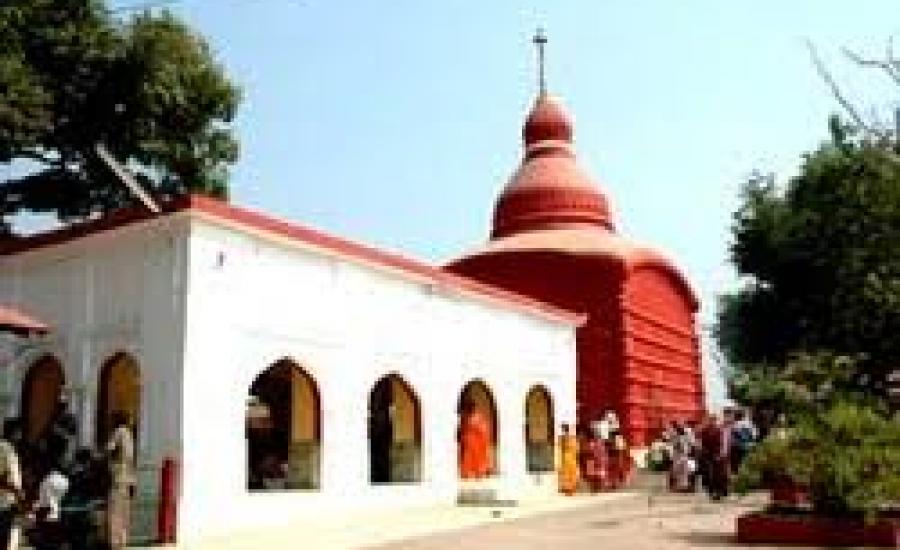
Tripura Sundari Temple is a Hindu temple of Goddess Tripura Sundari, better known locally as Devi Tripureshwari. The temple is situated in the ancient city of Udaipur, about 55 km from Agartala, Tripura and can be reached by train and road from Agartala.
The temple is considered to be one of the 51 Shakti Peethas; legend says that the right leg of Sati fell here. Here, Shakti is worshipped as Tripurasundarī and the accompanying Bhairava is Tripuresh. The main shrine, a cubical edifice with a three-tier roof with a finial, erected by Maharaja of Tripura Dhanya Manikya in 1501 AD, is constructed in the Bengali Ek-ratna style.
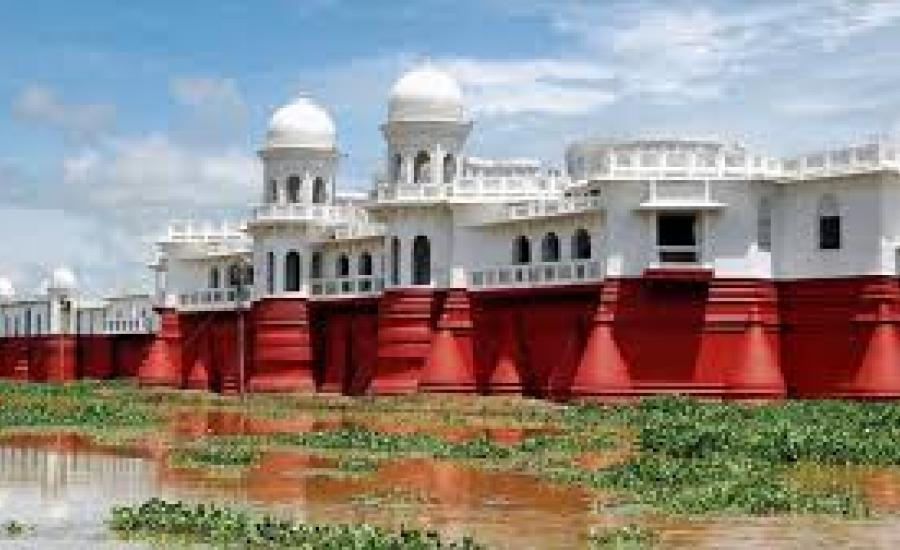
Neermahal is a former royal palace built by Maharaja of Tripura Kingdom Bir Bikram Kishore Manikya Debbarma of the erstwhile Kingdom of Tripura, India in the middle of the lake Twijilikma (Now known as Rudrasagar) in 1930 and was completed by 1938. It is situated in Melaghar, 53 kilometers away from Agartala, the capital of Tripura.
Neermahal is a water Palace. The architecture assimilates the Hindu & Islamic architecture styles. It is one of the two lake palaces in India after Jal Mahal in Rajasthan where the architecture is constructed directly on the Lake not on any island.
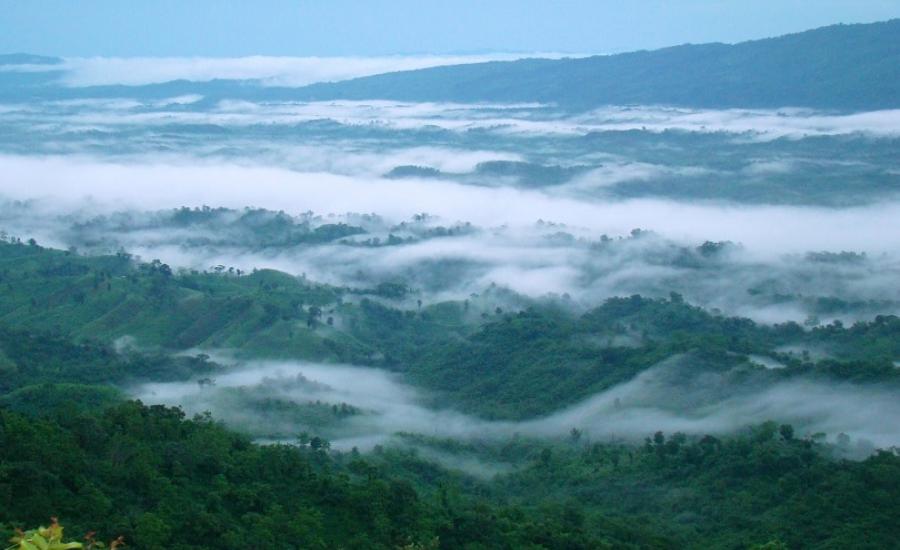
Jampui Hills is a hill range located in the North Tripura district in the north eastern part of the Indian state of Tripura where its bordering Mizoram in the East. The average altitude of the hill range is approximately 1000 meters above sea level. Jampui Hills is situated about 200 Km. away from Agartala
During November every year, the unique Orange & Tourism festival is celebrated in the Jampui hill. A large number of tourists, both domestic and foreign, participate and enjoy this festival. The rainy season is no less charming.
The view of rising and setting sun from various viewpoints in Jampui hills is a wonderful sight for the tourists. Tourists visiting the Jampui hill cannot afford to miss the view of the sunset and the sunrise. Various viewpoints in the hill range provide excellent panoramic views of the valley and villages of Mizoram.
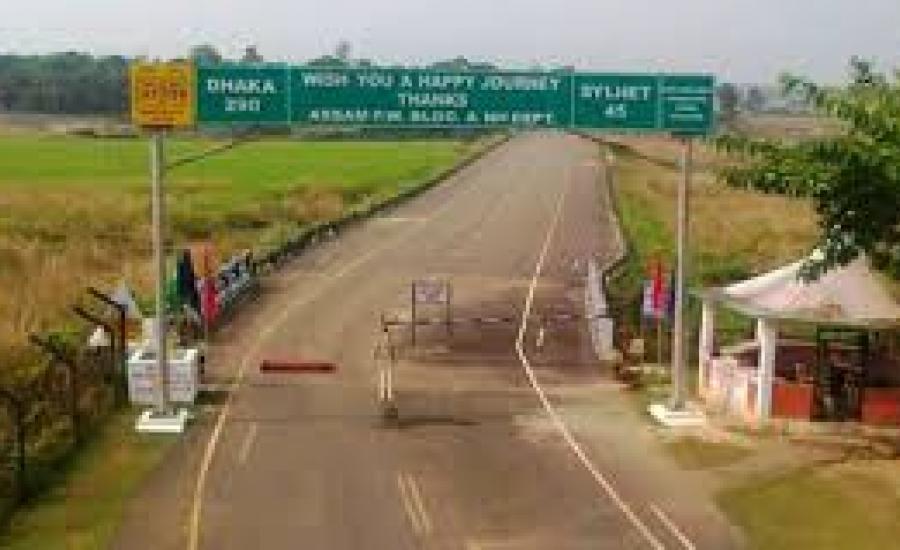
India-Bangladesh Border Haat is a border trade market between Bangladesh and India. It is a market place organized by the two countries one day each week. It is not only a market for buying daily commodities but also a reunion spot for families living on both sides.
The most attracted part of the Border is its Indo-Bangladesh evening ceremony. Its free of cost & open to all. Almost every evening a large sum of gathering can be seen there.
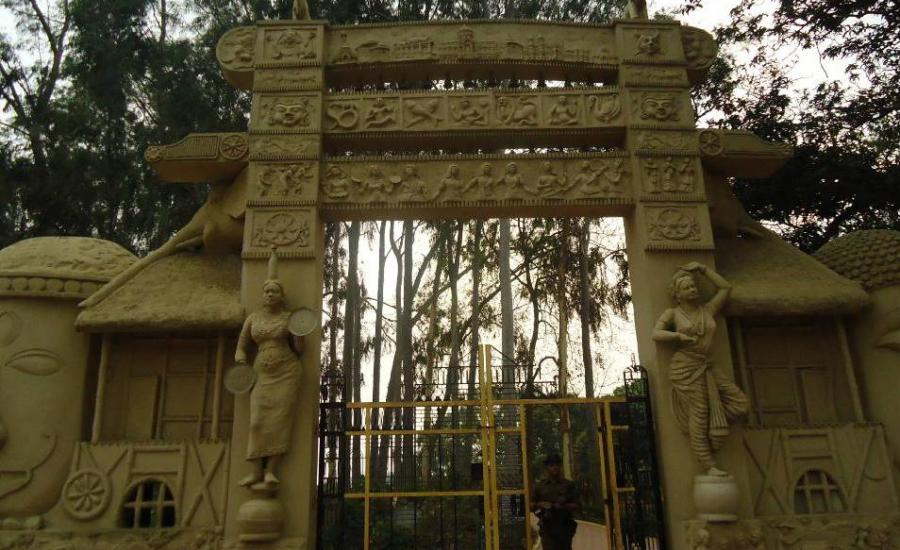
The Heritage Park is built by the Government of Tripura in the heart of the capital city. The Heritage Park by the Agartala GBP Hospital Road in Agartala next to the Raj Bhavan, is a grand establishment, inaugurated in the year 2012 by the Chief Minister of Tripura.
The entrance of the park is a mind blowing piece of artistry that harmonically mixes the art and culture of both tribal and Non-Tribal section of Tripura history to present a unique state of art structure. The garden is very well manicured and sculpted by the landscape designers. The 12 Acre park is covered by a 1.1 KM long park pathway that connects the three section of the Heritage Park namely - The Mini Tripura, The Natural Forest and The Medicinal Plant Table Top.
The main attraction of the heritage park is that it offers the travellers all the flavours of Tripura at a single spot. All the glamour, vigour and wonder of Tripura are presented to the tourists on a well decorated palate. The miniature versions of the wonders of Tripura namely Unakoti sculptures, Neermahal Palace, Ujjayanta Palace, Tripura Sundari Temple, Stone relics of Pilak, Mahamuni, Chandrapur etc. To give more grace to the Heritage Park, the addition of many natural resources of the Tripura forestry is planted on the natural forest part of the park. The indigenous tress and exotic flowers and animals of the land are preserved in this part of the park. The Park is further decorated by heritage benches, stone statures, monuments, earthen potteries, wood carving and much more to keep visitors interested and entertained in this serene ambience of the miniature Tripura.
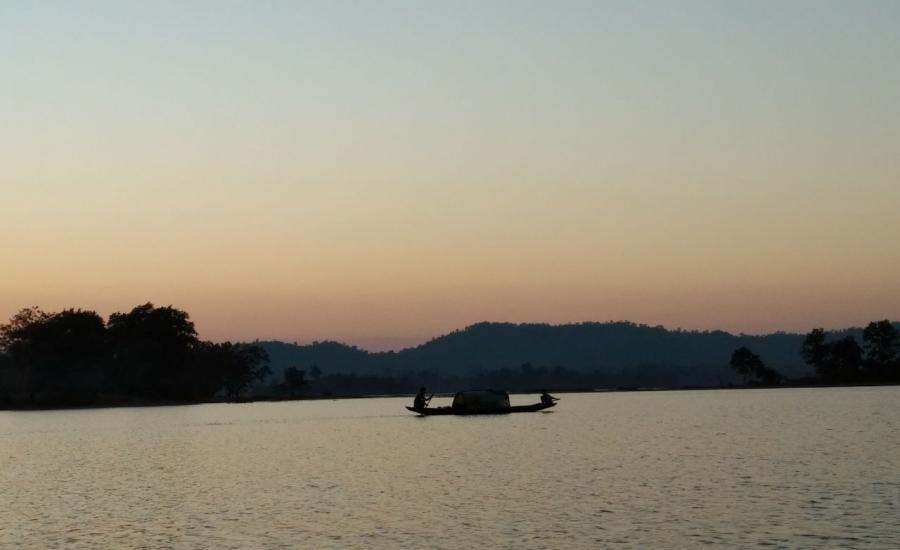
Dumboor Lake is a charming water body located in Gandacherra Sub Division 120 Km. away from Agartala. The look of the lake is like tabour shaped small drum, “Dumboor” of Lord Shiva from which the name “Dumboor” originates. A massive and breathtaking water body of 41 sq.km. with an unending spell of luxuriant green vegetation all around stands majestic for her exceedingly charming beauty and 48 islands in the midst of the lake. Migratory birds and water sports facilities are additional attractions. There is a Hydel Project near the lake from where River Gomati originates and this is called Tirthamukh where on 14th January every year famous ‘Pous Sankranti Mela’ takes place. The lake is the confluence of rivers Raima and Sarma. Various species of migratory birds are visible in the winter and it has rich reservoir of natural and cultured fishes. In one of a kind the island “Narkel Kunja” has been developed.
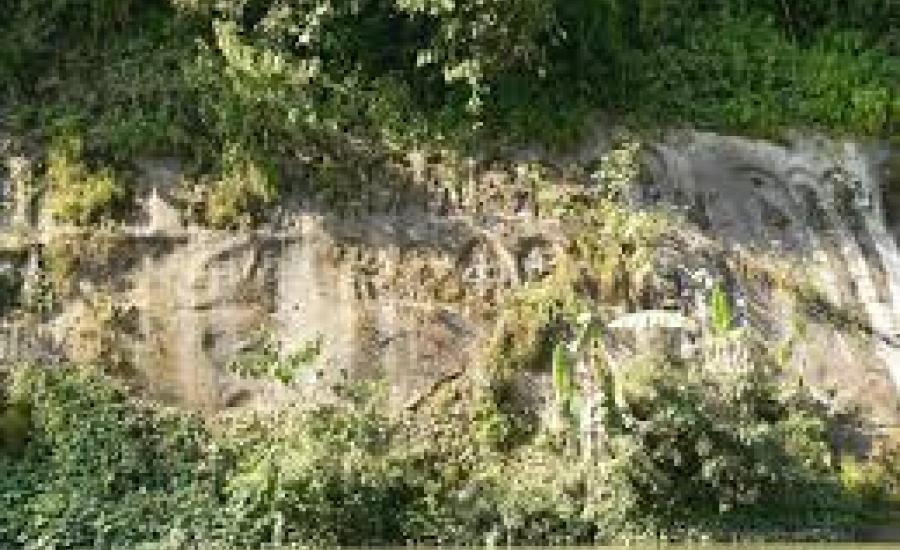
Devtamura (or Debtamura) is a hill range in South Tripura district of Tripura, India. It is known for an archaeological site of rock sculptures, a panel of carved images, on the bank of Gomati River. The stone images are reported to mark the revival of Brahmanism during the 15/16th century when influence Buddhism waned in India.
Devtamura is 85 kilometers (53 mi) in length and is situated at an altitude of 229 meters (751 ft) above sea level. It is situated in between Udaipur and Amarpur. Damburu Falls commences at the top of Devtamura, continuing through a series of terraces.
The approach to the site is only by boat a three-hour journey from Amarpur to Udaipur to the forest area of the site; the total distance of travel from Agartala is 75 km.
A portion of the Devtamura hill range, Chhabimura is famous for boat ride on the Gomati River. The stilt mountains also famous for huge rock carving of various God & Goddess making it the must visit in Tripura.
